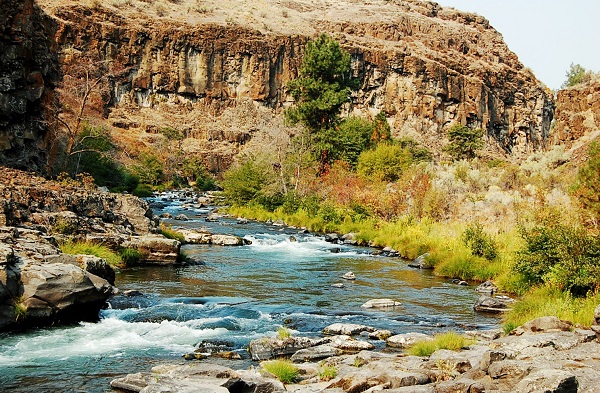Thirteen years ago, Ken Bilderback said “I do” in Gaston. Bilderback, now 57, married his wife, Kris, in a ceremony at one of Gaston’s founding wineries, Kramer Vineyards. The newlyweds from Portland had little inclination of the massive role Gaston would play in their future.
The northern Willamette Valley town of Gaston (population 651) lies thirty miles southwest of Portland on Highway 47. The area was originally recognized by Native Americans as the revered site of Wapato Lake—where wildlife would gather for water and the root vegetable, wapato, grew. In the 1880s, the town’s namesake, Joseph Gaston, drained the lake and turned it into onion-growing farmland. By then, Native Americans already had lost the site to white expansionists and development tycoons.
Joseph Gaston was one such developer, only living in the town for a short fifteen-year stint while he was trying to make his fortune in the railroad industry. He fell far short of joining the ranks of the Vanderbilts and Pullmans, completing only a regional railway. Bitter, he left town for good. In the years before his death in 1913, Gaston wrote a massive four-volume history of Oregon that did not once mention his namesake town.
As for Gaston’s legacy in Oregon, most railway tracks were removed by 1985, and Wapato Lake is slowly being restored right over his onion farm. Locals hope that Wapato Lake will become a recreational site that will draw people to this pastoral pocket of Oregon wine country.
A Detroit native, Bilderback was drawn to Oregon after living in a few U.S. states as a young man, moving to Portland in 1980. He worked in journalism for thirty years, most of them in Oregon. In 2004, he became disenchanted with the newspaper industry and decided to move on.
The Bilderbacks began searching for a home in the country, where they could own a bit of land and glide into a new stage of life. “I had never lived in a truly detached home with a yard,” recalls Bilderback. “I wanted that to change.”
Later in 2004, they said “I do” in Gaston again—this time to a one-acre plot of land. “It was the first and only place we looked at,” says Bilderback of their Laurelwood farmhouse. Laurelwood is an unincorporated community in the east valley of Gaston, a five minutes’ drive from Gaston proper.
Settling into country living, Bilderback joined the Gaston Volunteer Fire Department, becoming its public information officer in 2008. The impressively modern fire station covers a fifty-five-squaremile fire district. While there is not a single stoplight or bank within their territory, the twenty- five volunteers keep busy serving the approximately 6,700 fire district residents.
These firemen also maintain their regular jobs, some in the tech industry for Intel, which has an office in nearby Hillsboro. Other people farm, tend to their vines, work in the surprisingly still-prosperous timber industry or find inspiration in the local surroundings, as Bilderback did.
After researching the town’s history and getting to know long-time locals, Bilderback realized Gaston’s public record was negligible. Stories from the area’s residents inspired him to go back to his journalistic roots. Within a year, Bilderback had compiled more than one hundred oral stories that included history, gossip and infamy in Gaston. The project originally began as a centennial history of the Gaston Volunteer Fire Department (now complete, Fire in a Small Town will be released in summer, 2013), but first resulted in the 2011 self-published book, Creek with No Name, How the West was Won (and Lost) in Gaston, Oregon. While Bilderback inquired and transcribed, his wife, Kris, confirmed information whenever possible and supplemented the tales with historical records. A percentage his new book’s proceeds will go toward the newest Gaston fire truck, Rescue 11.
However colorful the past, the modern query is the sustainability of the town today. Highway 47 is the main street that passes through town. Blink, and you’ll miss it, unless it’s August 23-25, when the annual Wapato Showdown Car Show and Good Ol’ Days Parade fill the street. Just a few blocks from the northern edge of town, the post office marks the southern boundary of Gaston—and the edge of Washington County. In fact, the post office’s drive-up mail drop box is actually in neighboring Yamhill County.
A growing number of tourists venture off the main path and into the western hills to taste wine at Gaston’s wineries, which include Elk Cove, Plum Hill and Patton Valley Vineyards. For many, though, Gaston is just a quick sip on a journey south toward other Willamette Valley viticulture areas. Cruising past Gaston, however, is an error of omission. Those who do will miss the charming Gaston Market with its vast array of local meats, international cheeses and a range of provisions atypical of a small-town grocer.
Wendy Chamberlain, owner of The One Horse Tavern, has run what she calls “Gaston’s living room” since 2007. “While we are always hoping to draw more people in, we do get a boost from wine tourists, bikers and people traveling for work,” she says.
A few years ago, Gaston’s 525-student, K-12 school nearly shut down. Students were going to be funneled into the nearby Forest Grove School District. Gaston’s community rallied and saved the school, which helps to solidify Gaston’s independence.
In the outskirts of Gaston lie major economic contributors. Stimson Lumber Company, northwest of town, is still a substantial employer. Trucks bustle in and out of the mill, filled with lumber from the forests adjacent to the mill, near Hagg Lake. Though not as fruitful as it once was, this mill is one of the few remaining strongholds of the Oregon timber industry.
Wine is the newest economic player. Wine growers and wineries dot the landscape. Plum Hill Vineyards—a former dairy farm between Gaston and Forest Grove—is one such winery. Overlooking Patton Valley, which includes Gaston, this small-production winery is run by owners Juanita and RJ Lint. After the Lints retired from their careers in telecommunications, they took on winemaking, with the community pitching in to help them learn the craft. Kramer Vineyards, one of Oregon’s founding wineries, took the Lints under their wing. RJ took some wine-making and vinology classes, and they both helped out at various local vineyards. With the help of the Kramers, the Lints planted their own vines at their “hobby” vineyard in Forest Grove, subsequently purchasing the site that would become Plum Hill in 2007.
Though Gaston has strong legs of its own, its proximity to both Portland and wine country are the building blocks for Gaston’s future. “I dos” from newcomers such as the Bilderbacks, Chamberlain and the Lints—coupled with renewed vows from old-timers—may be the sacred vows of Gaston’s longevity.
Gaston by the Numbers
Population of Gaston: 651
Population Growth (2000 – 2010): + 5.8%
Median Household Income: $58,863
Median Single-Family House Price: $314,000








